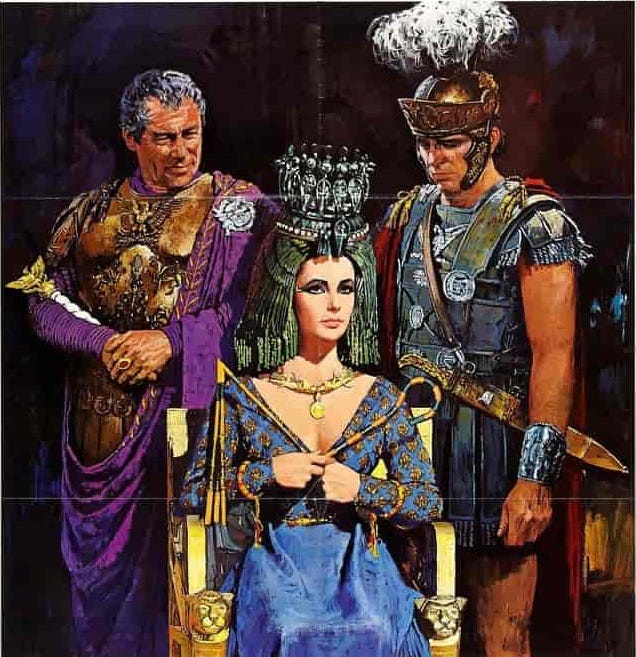
:max_bytes(150000):strip_icc()/meeting-between-cleopatra-and-octavian-after-battle-of-actium-1787-1788-by-louis-gauffier-1761-1801-oil-on-canvas-cm-83-8-x112-5-cm-18th-century-479642637-57b856c83df78c87636d429f.jpg)
Jean-Léon Gérôme (1824–1904), Golgotha (Consummatum Est, or Jerusalem) (1867), oil on canvas, 81.3 x 146 cm, Musée d’Orsay, Paris.

At the time, the French diplomat Ferdinand de Lesseps and his company were busy constructing the Suez Canal in Egypt, which opened under French control in 1869. Behind Cleopatra several men, presumably Caesar’s counsel, are sat at a table. A slave cowers behind and to the right of her.Ĭaesar is seen working at his desk, looking up at Cleopatra, his hands held out as if trying to regain control of the situation. Her breasts are exposed below an elaborate Egyptian jewellery collar, and wispy veils hang from a belt-like girdle slung from her hips. She looks at Caesar, her expression hard to read because of the angle of view of her face. Cleopatra is stood at the edge of the carpet from which she has just emerged, dressed (or undressed) for seduction. Gérôme depicted this in his Cleopatra before Caesar in 1866. Jean-Léon Gérôme (1824–1904), Cleopatra before Caesar (1866), oil on canvas, 183 x 129.5 cm, Private collection. She became Caesar’s mistress, bearing him a son, and convincing him to fight and defeat Ptolemy’s army at the Battle of the Nile, restoring Cleopatra to her throne. Although she was probably smuggled in inside a large bag, this has traditionally and more romantically been described instead as a large roll of carpet. In 47 BCE, she took advantage of Julius Caesar’s anger towards her brother by having herself smuggled into Caesar’s palace in Egypt, so that she could meet with the emperor. For much of this period she ruled jointly with relatives in 51 BCE, when she was ruling with her ten year-old brother Ptolemy XIII, they fell out, and she tried to rule alone. He continued his theme of empire with a painting of Cleopatra VII Philopator, known more widely as Queen Cleopatra, who had been the last active pharoah of Ptolemaic Egypt, ruling from 51 to 30 BCE. This work was shown at the Salon the following year, where Degas and Monet exhibited their first paintings. He also included himself, and the older artist Ernest Meissonier (1815-1891), in the painting: I believe that they are both at the back, at the far left. Gérôme had attended in the role of semi-official court painter (he was commissioned by the State), made sketches of some of the key figures, and was further aided by photographs made by Nadar.

Gérôme articulated Napoleon III’s aspirations for empire in his elaborate formal painting of the Reception of Siamese Ambassadors by Napoleon III (1864), depicting a grand reception held at Fontainebleau on 27 June 1861. Jean-Léon Gérôme (1824–1904), Reception of Siamese Ambassadors by Napoleon III (1864), oil on canvas, 128 x 260 cm, Château de Versailles, Versailles, France.

In 1863, Gérôme married Marie Goupil, the daughter of Adolphe Goupil, proprietor of the gallery which was flourishing thanks to Gérôme’s paintings. His popularity had not gone unnoticed by the Imperial court, which was also at its apogee at the time. By 1862, Jean-Léon Gérôme (1824–1904) had reached the height of his narrative powers, exhibiting a succession of narrative paintings, several of which had been turned into prints and were selling strongly.


 0 kommentar(er)
0 kommentar(er)
